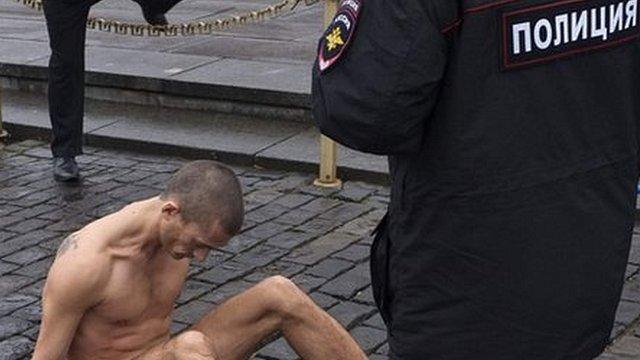Pavlensky Russian trial: Bizarre case of performance artist
- Published
Artist Pyotr Pavlensky has been fined and freed as Sarah Rainsford reports
Petr Pavlensky is a free man again after seven months behind bars.
The Russian artist was found guilty of criminal damage for his last project and issued a hefty fine by a Moscow court.
But emerging to cheers from his supporters on Wednesday, he was clearly undaunted by the verdict.
Pavlensky told the crowd that they are living in a society controlled through "uninterrupted terror", that surveillance in Russia is on the rise but that people's own fear is making them prisoners.
That was the stark message the artist wanted to send when he conceived "Threat" and selected the headquarters of Russia's powerful security service, the FSB, as his canvas - or target.
The FSB's own CCTV cameras captured the moment early one November morning when he doused a door in petrol and set it alight.
Pavlensky then stood motionless, fuel can in hand, as the flames rose behind him. Moments later, a police officer wrestled him to the ground.
So was it art, or just plain arson?
According to Pavlensky, everything from the fire onward was part of what he calls political art. He was transformed into a passive observer, while officials from police to prosecutors were drawn in to the action and exposed.
Pyotr Pavlensky set fire to the door of the FSB, Russia's security service
Artist found guilty of tyre-burning protest
Pushing the art of protest to new limits
Activist sets fire to Lubyanka door
Among those unwitting players were a prosecution expert who claimed that the FSB building was an object of cultural heritage because eminent cultural figures were held prisoner there during Stalin's repressions.
Pavlensky's lawyers called two Soviet-era dissidents in response.
"It truly is a unique monument," one of the former political prisoners agreed. "To the destruction of culture, and to Russian terror."
The artist was escorted in handcuffs to every hearing by police and locked in a metal cage in court. When he addressed journalists during a break and spoke of state terror, a police dog snarled and slavered before his cage, straining its leash.
So the half-a-million rouble (£5,400; $7,850) fine, plus a similar sum in damages, was a surprise.
One commentator in Vedemosti newspaper suggested that the Kremlin wanted to avoid a repeat of the 2011 Pussy Riot scandal, when three women were imprisoned for their anti-Putin punk performance in a Moscow church.
Pavlensky is friends with the group and his first "action" was to support them by sewing his lips together in a symbolic protest.
Since then he's nailed himself to Red Square by the scrotum, wrapped himself in barbed wire and leaped naked onto the wall of a psychiatric institute to lop off his earlobe.
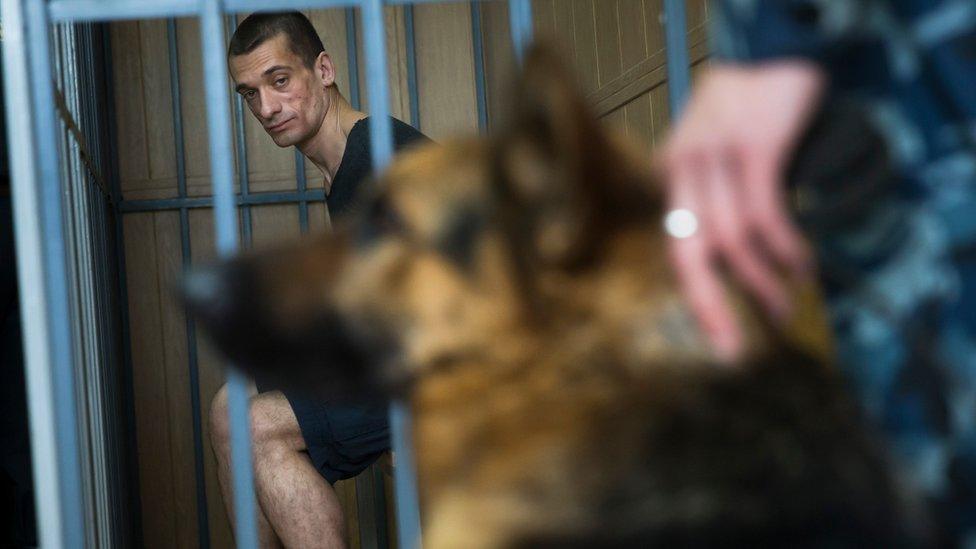
During the trial, Pavlensky's cage was guarded by a dog
Deliberately shocking, he has told me his work is designed to shake people out of what he calls their fear, apathy and indifference.
To some Russians the result is daring, to others disgusting. Pavlensky has been called mad before and now he's officially a criminal.
"They're trying to label me: to say this is how a criminal, or a sick mind, views those in power," Pavlensky told me, before being whisked away by friends and family.
"It's a fight for a label: criminal or mad? But I am an artist. I am doing political art," he insisted. "Nothing less, and nothing more."
And he has vowed to go on with that, despite his sentence.
Pavlensky's protest art is challenging and provocative. But it's difficult to ignore.
- Published9 June 2016
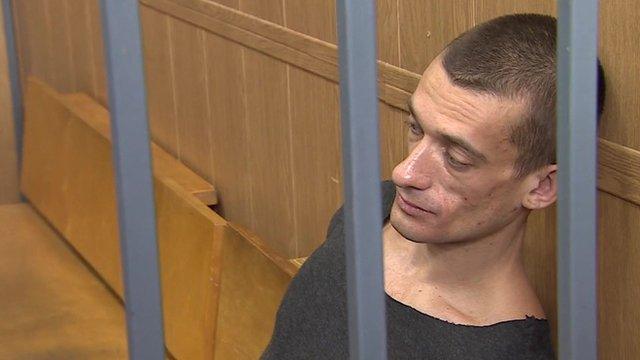
- Published19 May 2016
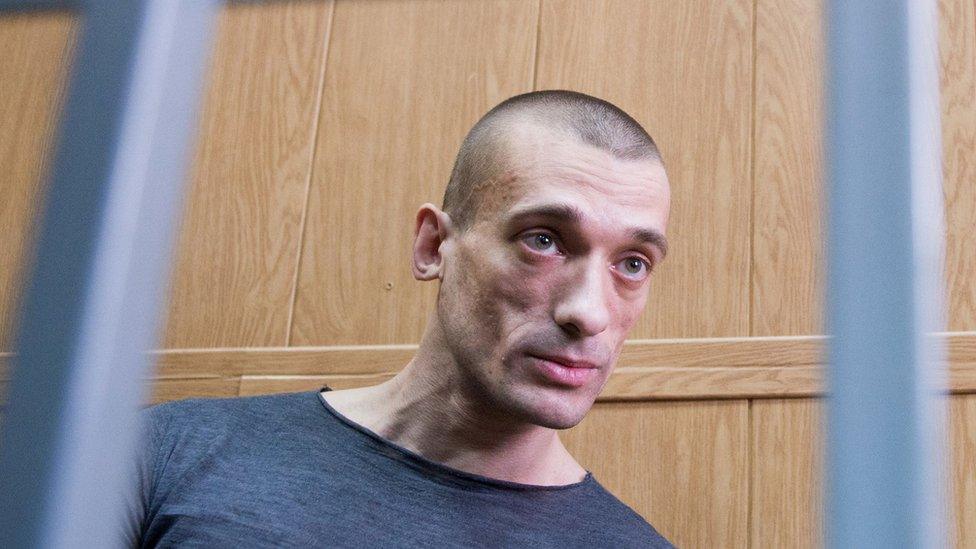
- Published28 April 2016
- Published9 November 2015
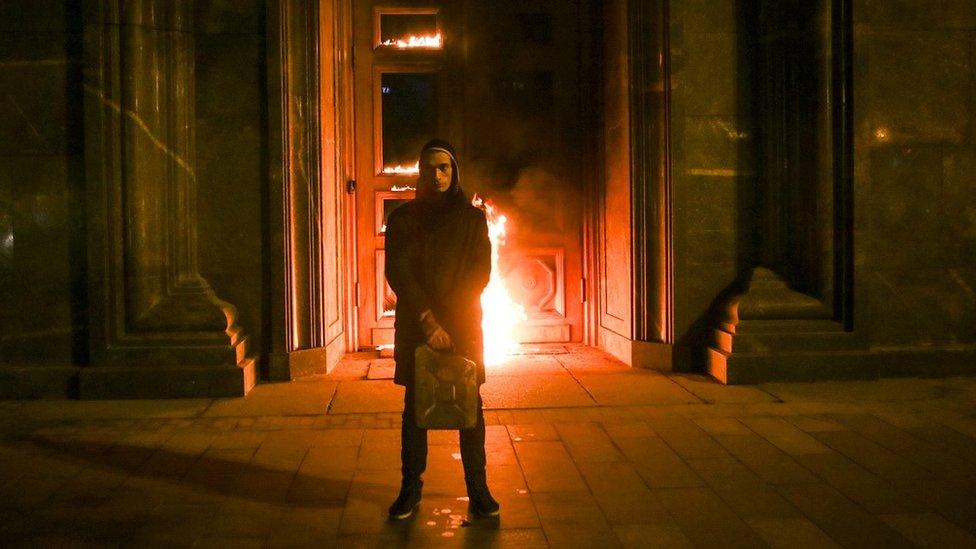
- Published15 November 2013
